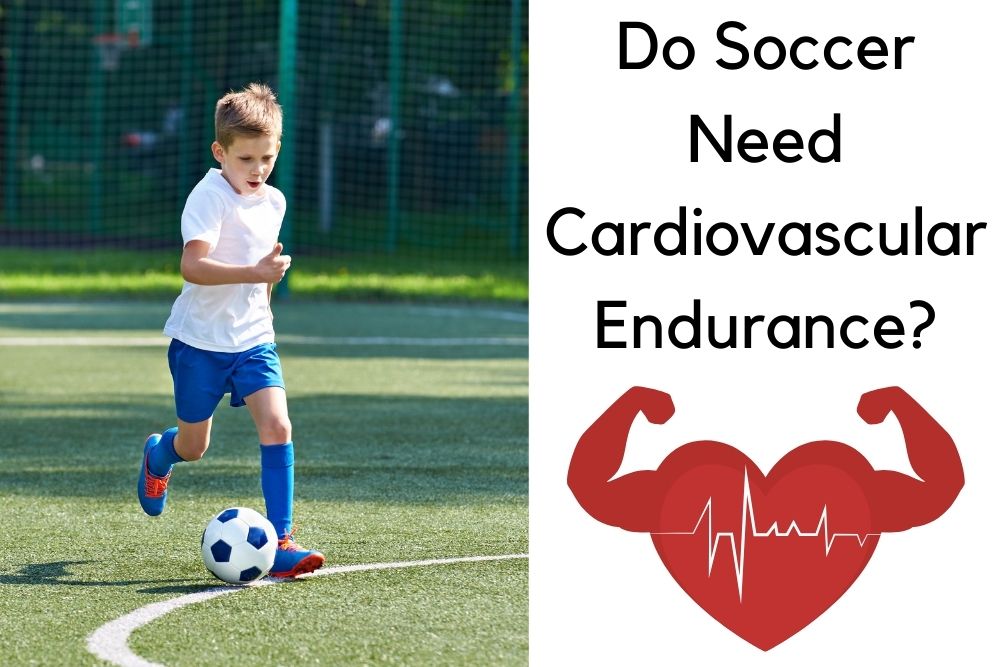Soccer is not an easy sport. It demands its players to be on their feet and move about at all times, excluding the power tackles, shoulder challenges, and jumps.
Elite soccer players run a good 7 miles in each match, demonstrating remarkable cardiovascular endurance. It’s precisely this overwhelming number that misleads many newcomers in their training practices.
I see players aimlessly tiring themselves out to build stamina and even coaches running their players around the field as if they’re preparing them for a marathon. That’s not how soccer works.
Yes, soccer needs cardiovascular endurance, but it needs a good combination of strength and power too. Improving your cardiovascular endurance alone will barely have an impact on your game.
To clarify this matter, we’ll uncover how much cardiovascular endurance soccer players need and how much you should focus on it during your training.
Quick Navigation
Does soccer need cardiovascular endurance?
The bare minimum cardio needed for soccer is to last 90 minutes on your feet. If you can do that, you’re good to go.
Cardiovascular endurance simply means your capacity to perform repetitive body movements. Running, walking, cycling, and swimming are all exercises that strengthen your cardiovascular system.
While these exercises are great for your blood circulation, metabolism, weight maintenance, breathing and lung capacity, they’re rarely the movements you rely on during a soccer match.
As a matter of fact, you’ll see that soccer players switch their movements and direction every few seconds.
Between losing and regaining possession, a soccer player turns, changes pace, and positions himself constantly. Add a bit of passing, dribbling, shooting, and heading to it and you’ve got yourself a soccer game.
So, you don’t need a high cardiovascular endurance for soccer. If you’re able to carry out drills or practice for one and a half hours, you already have the cardiovascular endurance for soccer.
No amount of cycling, long-running, or swimming will improve your performance further than that.
Soccer is not running on the pitch at a steady pace throughout the game. You need to sprint, jump, slide, evade, turn, walk, and even stand idle at times.
Exercises that build your cardiovascular endurance strengthen your slow-twitch muscle fibers for prolonged monotonous movement. For soccer, you need the exact opposite.
You need strong fast-twitch muscle fibers for the explosive strength needed in common soccer movements like sprinting, jumping, and pushing.
That’s why most pro coaches prefer High-Intensity Interval Training (HIIT) programs for their players. Such exercises condition one’s body for the movements needed in a soccer game. While doing that, it also builds a baseline of cardiovascular endurance.
Is soccer a cardiovascular exercise?
Soccer works out your entire body through the 90 minutes. There are exhaustive moments in attacking and defensive plays where you run fast, turn, and jump.
There are times to cool down and recharge for the next burst of energy. But, between these short interchanging warm-ups and cool-downs, you remain in a somewhat continuous motion through the game. That makes soccer a great cardiovascular exercise.
The compelling thing about choosing soccer as your cardiovascular exercise is that you don’t get bored out of it. Unlike going to the gym where your success is mainly tied to your gym partner or trainer, you enjoy your time among friends when playing soccer.
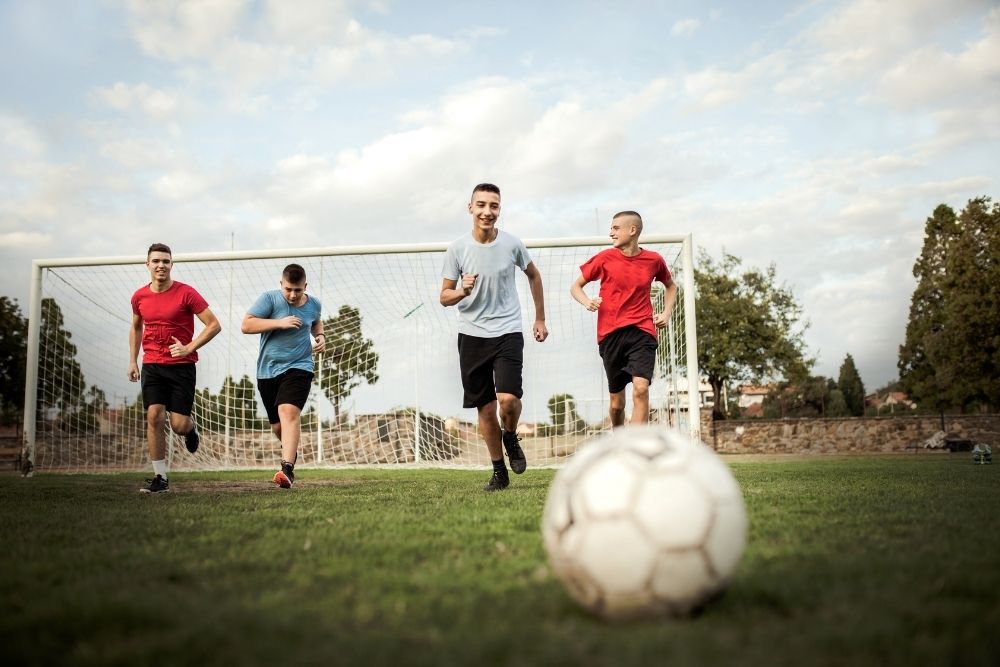
Also, while you’re busy building cardiovascular endurance, you strengthen your leg muscles and joints. The varying intensity of exertion in soccer paired with jumping, dribbling, and turning improves your overall balance and stability.
Also, soccer burns many more calories than monotonously running on the tracks. So, if you have a side goal of shrinking your waistline while building cardiovascular endurance, soccer is an ideal workout.
How to build cardiovascular endurance for soccer?
How to build cardiovascular endurance for soccer is the most commonly asked question at training camps. It is easy to get confused when figuring out which aspect of your training needs the most attention. Is it cardio, strength, or power?
The correct answer is a combination of all three. But how do you differentiate them in the first place?
It’s easier to understand if you look at it this way. Your strength is your ability to lift up a 20lbs block, your power is the speed with which you pick it up, and your endurance is how many times you can repeat the movement before tiring out.
Since soccer needs all three for sprinting, shooting, jumping, and turning, it’s best to pick exercises that will complement your various movements in a soccer game.
While building up cardiovascular endurance, the exercises you choose should also improve your power and strength.
The following four workouts are a classical way to build cardiovascular endurance for soccer. So, let’s have a look!
High-Intensity Interval Training
HIIT makes up the lion’s share of any professional soccer training session. It is an attractive routine because you can mix and match an extensive variety of exercises together.

You can choose to sprint at your 90% speed for 30s followed by 15s of rest, where you lightly jog to complete one loop. You can keep this up for either a specific number of loops, i.e., 10, or a specific time, i.e., 5 minutes.
There are millions of ways you can plan your HIIT workout. The goal of these workouts is to have a burst of exertion for 30-45 seconds with a break of 15-30 seconds afterward.
As you may have noticed already, this is exactly how you move around during a soccer match.
Cone drills
Cone drills are as effective for building cardiovascular endurance as strengthening skills and dribbling. There are a few different ways to design your cone drills, but here’s the easiest and most widely used.
Pick up four cones and place them on the 5-, 10-, 15-, and 20-yards markers from your position.
Start by sprinting up to the first cone at the 5-yards mark and break your sprint as close to the marker as you can. Then move around it and jog back to your starting point.
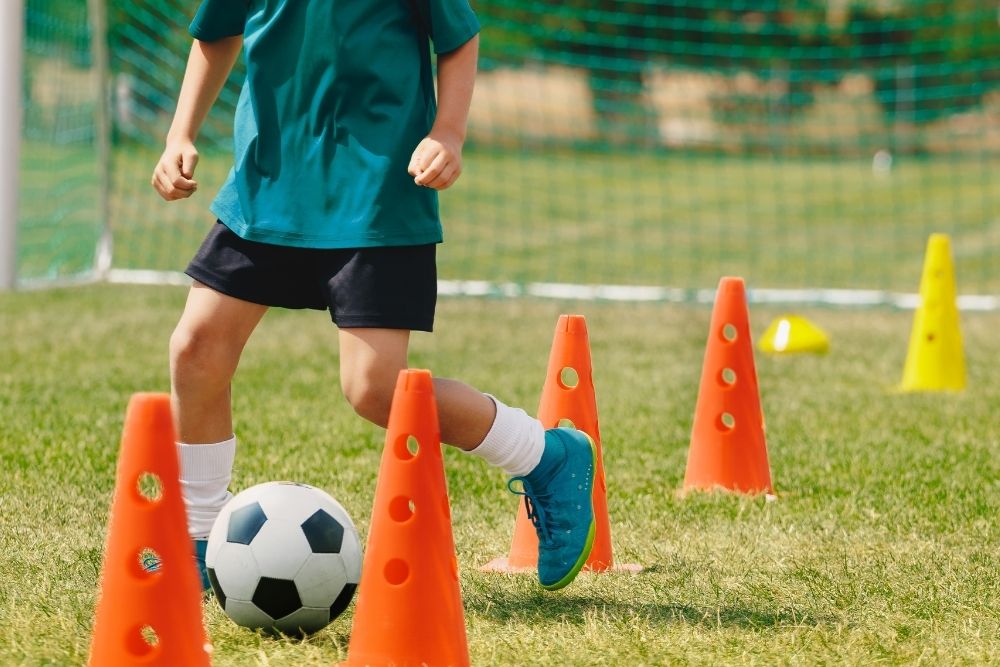
As you reach the starting point, turn around again and sprint to the next marker at 10-yards. Repeat the movement for all markers and keep going for 15-30 minutes, or until you get tired.
Such exercises will help build your cardiovascular endurance since you’re in a continuous state of motion. They will also strengthen your fast-twitch muscle fibers and joints from sprinting and turning, which are a great compliment to your soccer performance.
Swimming
Swimming is an ideal exercise for your entire body. It works your lower body, upper body, back, and core simultaneously.
It is mainly a cardiovascular exercise to build endurance. But, since you’ll have to work your arms and legs against water, it involves a fair bit of strength building as well.
Once you’re done with your routine training and workout, it’s a great way to cool down your body while also working out your muscles at the same time. A big part of swimming is holding your breath underwater while waiting for the next stroke.
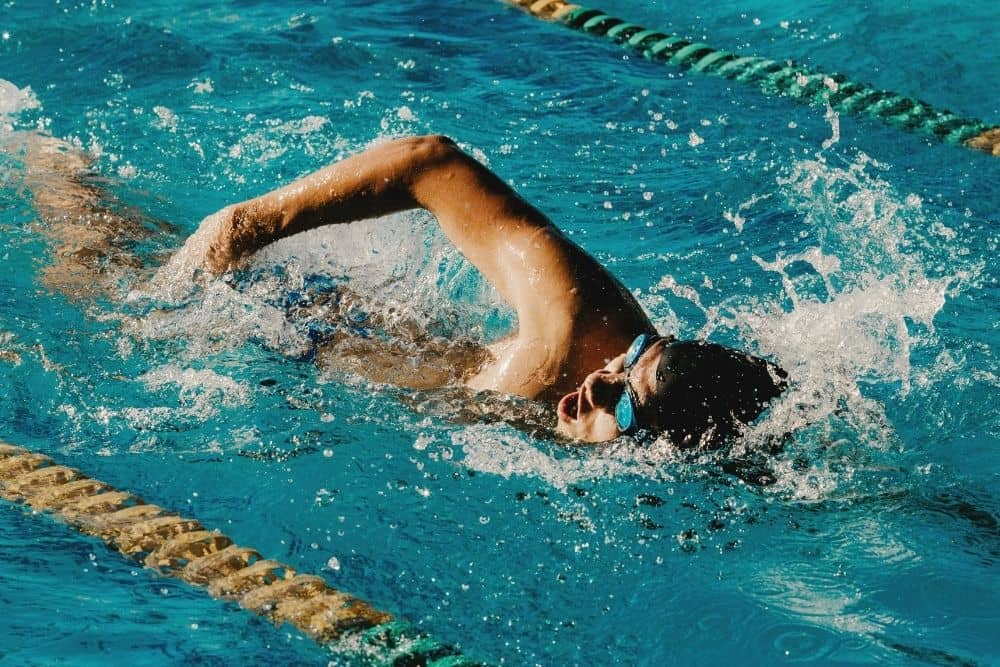
This is what improves your lung capacity and makes your oxygen circulation to the blood more efficient. On the pitch, it means more cardiovascular endurance.
That’s why you can see many big clubs and franchises having a regular swimming session after games and training for their players.
Stair climbing
Stair climbing is an intense workout that is popular for building cardiovascular endurance, core, and lower body strength. A few sets before you begin your training day and a few sets after should make a significant improvement in your endurance in just over eight weeks.
The practice is as simple as the theory. Find a staircase at least 50 steps high, and run it up with all your might. Once you reach the top, take a deep breath and slowly walk your way down.

Repeat the process ten times to complete one set or one circuit.
Stairs at stadiums are an ideal place to practice this. However, if your team doesn’t have its own stadium yet, you can even use an elevated road or a hill as a replacement for the workout.
Stair climbing drains your muscles of energy, but it also keeps you in a continuous motion. That constant motion is what improves your cardiovascular health. You’ll also be strengthening your core and quads as you tread up and down the stairs.
Does weightlifting help build cardiovascular endurance for soccer?
Lifting weights has long been considered counterproductive for building cardiovascular endurance in soccer. Thanks to the new generation of fit soccer pros like Hulk, Cristiano, and Bale, that myth is long busted.
If you lift weights while keeping your cardiovascular strength as a target, your gym sessions can improve your endurance in general.
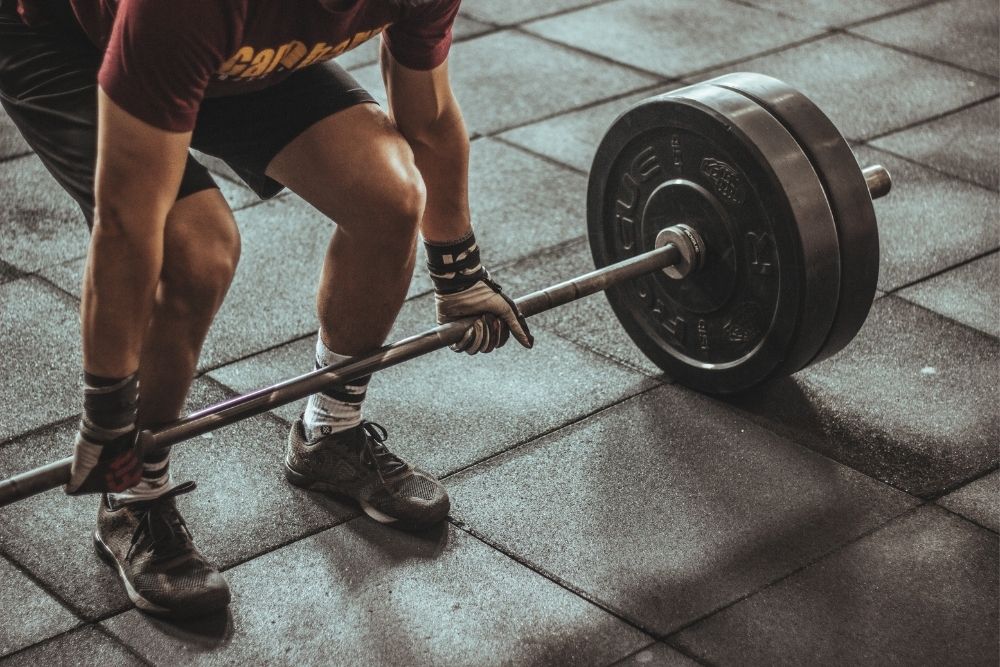
That’s to say, if you train the specific muscles that you use for your cardiovascular endurance, like the quads, calves, and core, they’ll improve your overall performance.
Having a stronger core or lower body is crucial for high endurance performances. You can only train these muscles to an extent in your traditional cardio workouts.
After your threshold point, you need to include weight lifting into your workout routine to certain muscle groups in specific. Having stronger quads and calves from weight lifting will improve your capacity to perform repetitive movements.
They even add up decently to your overall strength when playing soccer or when trying different workouts. So, yes. Weight lifting does help build cardiovascular endurance for soccer.
An ideal soccer workout routine includes a good mix of cardio and weights.
Conclusion
Cardiovascular endurance is often mistaken as the sole physical requirement for playing soccer. While there is a fair bit of running involved in soccer, it is never in a monotonous pattern to be driven by cardio alone.
There are many complex movements in soccer, like turning, stopping, and jumping. These movements require much more focus and training as they prevent you from injuries and improve your game performance.
However, you build cardiovascular endurance naturally when trying a mix of different drills and workouts designed for soccer. If you’re doing that, there really is no need for you to add hours of running to your workout.
It will only exhaust your muscles more than they need to be and leave you with little energy for the training and drills that are needed for playing soccer in addition to making you more prone to injuries.
Hi there, I’m Jay.
Soccer is everything in my life! My friends and I have created this blog with all our enthusiasm, passion, and understanding after years of playing pro soccer. Hope you will enjoy it!
